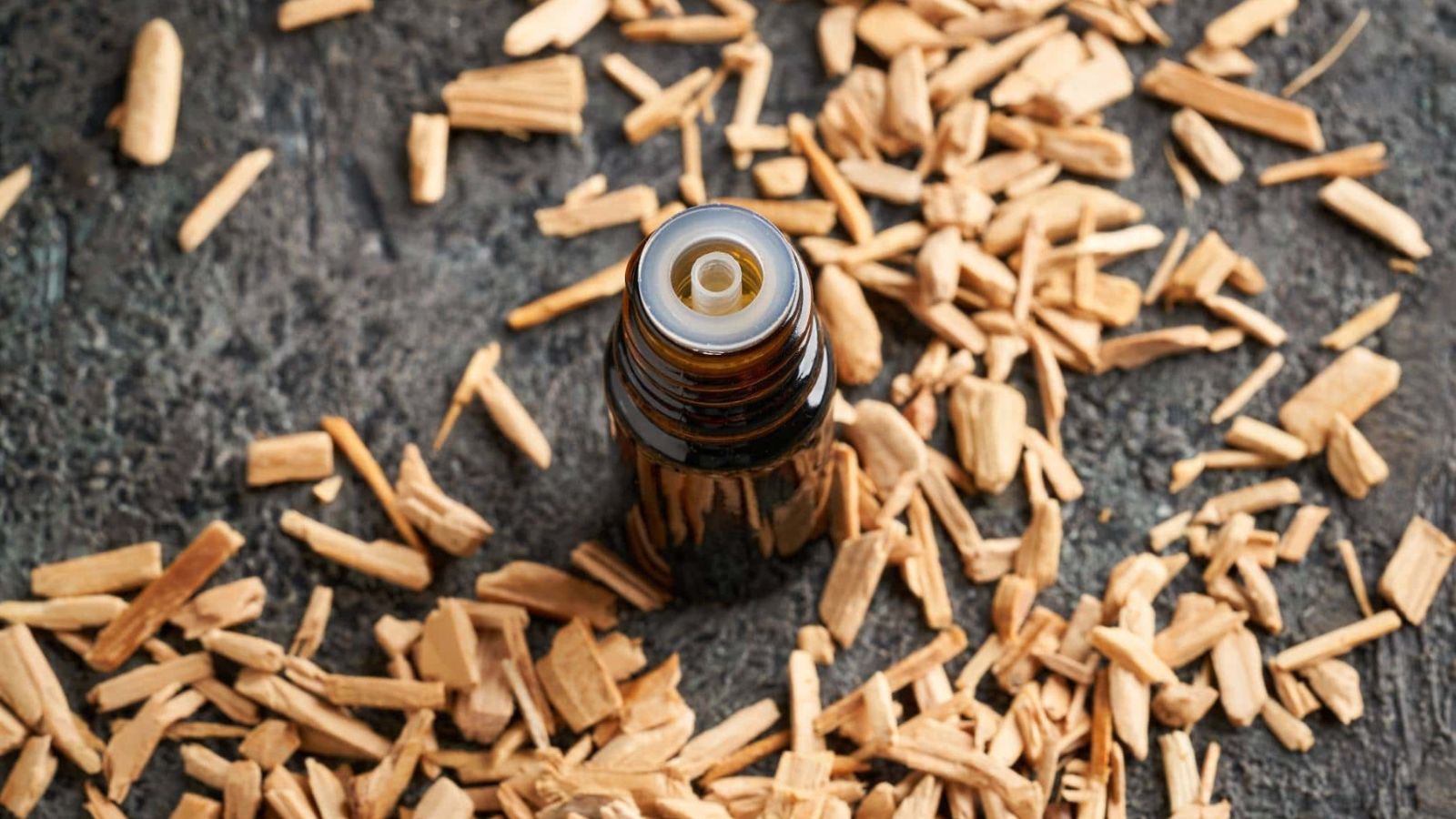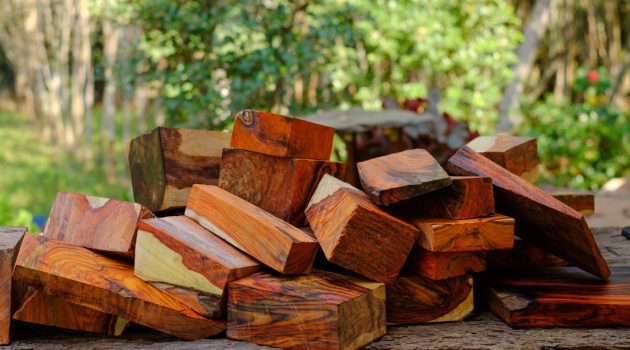The essence of cedarwood is distinctive and familiar, conjuring a myriad of associations from the natural to the hand-crafted.
Its aroma is often described as a harmonious blend of warm, woody notes with a comforting balsamic quality.
The scent of cedarwood can also entail a camphoraceous edge, similar to that of a freshly opened hope chest or a classic aftershave, tying in nostalgia with its unique olfactory profile.
Often used in perfumery, cedarwood provides a grounding base note that can add depth and complexity to fragrances.
Its versatile scent profile pairs well with various other aromas, enhancing spicy, earthy, or even sweet notes for a balanced and inviting fragrance.
Beyond its role in perfumery, cedarwood oil also finds its place in aromatherapy, where its soothing scent is prized for its calming and grounding effects on the mind.
Key Takeaways
- Cedarwood’s scent is warm, woody, and has balsamic undertones.
- It’s a popular base note in perfumery, blending well with different fragrances.
- In aromatherapy, cedarwood is valued for its calming and grounding properties.
1. Characteristics of Cedarwood Scent
When you discover the scent of cedarwood, you’re embarking on an olfactory journey through a forest of rich, warm aromas.
Cedarwood’s scent profile is notable for its woody and earthy tones, setting it apart from other wood-based fragrances.
- Earthy Foundations: Cedarwood offers a grounding, earthy scent that feels natural and unpretentious. Imagine walking through a lush forest; that’s the essence of cedarwood’s earthy notes.
- Warm Embrace: Beyond its earthiness, cedarwood has a warm character, enveloping you like a cozy blanket on a chilly evening.
- Subtle Complexity: While primarily woody, it’s not a one-note experience. You’ll notice balsamic undertones that add a nuanced layer, leaving a comforting yet sophisticated impression.
The natural charm of cedarwood is further articulated by:
Woody Core:
- Primary note: strong and unmistakable wood aroma
- Textural feel: robust and sturdy, evoking the solid presence of cedar trees
Balsamic Nuances:
- Additional layers: a hint of sweetness akin to a resinous sap
- Sensory image: think of the subtle, tangy-sweet finish of aged balsamic vinegar
Inhaling the scent profile of cedarwood, your senses are treated to this complex character.
You’ll find it’s not just a fragrance; it’s an aromatic narrative that speaks to the resilience and tranquility of the natural world.
2. Cedarwood in Perfumery and Aromatherapy
In the realms of perfumery and aromatherapy, cedarwood is a treasure, renowned for its unique woody aroma and impressive therapeutic benefits.
It’s the scent that grounds your spirit and the essence that eases your mind.
The Role of Cedarwood in Fragrances
Cedarwood oil serves as a foundational base note in many fragrances, providing a deep, woody scent that is both warm and grounding.
It’s less sweet and smoky than sandalwood and less musky than patchouli, creating a distinctive masculine scent profile.
When blended with other fragrances, cedarwood can complement spicy notes like ginger, lush amber, refreshing bergamot, or even floral scents akin to AERIN Cedar Violet.
Brands like Byredo Super Cedar artfully employ cedarwood to curate a comforting and elegant perfume experience that lingers and evolves on your skin.
Key Fragrant Combinations:
- Cedarwood and bergamot for a fresh, citrusy twist
- Cedarwood with amber for warmth and richness
- Cedarwood paired with floral notes for a sophisticated bouquet
- Cedarwood alongside spicy ginger for an invigorating scent
Cedarwood’s Therapeutic Properties
Cedarwood essential oil is not only a treat to the senses but also a potent ally in alleviating stress and anxiety.
Its natural sedative properties, attributed to the compound cedrol, promote relaxation and can improve the ambiance of a space when used in incense or candles.
As an essential oil in aromatherapy, it is celebrated for its anti-inflammatory effects and its ability to provide comfort and a sense of grounding.
Moreover, it’s often found in aftershave products due to its soothing effects on the skin.
Therapeutic Uses:
- Aromatherapy for stress relief and relaxation
- Incense and candles for a calming atmosphere
- Aftershaves with anti-inflammatory benefits
3. Cedarwood Species and Derivatives
Exploring the various cedar tree species and the process of extracting their aromatic oils gives you insight into the diversity and applications of cedarwood.
Varieties of Cedar Trees
Cedarwood comes from several species of cedar trees, each imparting a unique aroma profile. The Atlas cedar (Cedrus atlantica), native to the Atlas Mountains, is valued for its woody and slightly camphoraceous scent.
The Himalayan cedar (Cedrus deodara), also known as deodar, adds a soft, balsamic touch.
In contrast, the Eastern red cedar (Juniperus virginiana), which isn’t a true cedar but a juniper, is well-known for its sharper smell reminiscent of pencil shavings due to its high resin content.
Other notable species include the yellow cedar (Cupressus nootkatensis), also known as Alaskan yellow cedar, and the Lebanon cedar (Cedrus libani), which is famous for its historical use in ancient civilizations.
- Texas cedarwood and western red cedar (Thuja plicata) are other varieties, with the Texas variant often found in men’s fragrances and the western red noted for its less pungent, sweeter scent.
- Evergreen trees like northern white cedar (Thuja occidentalis) and bergenia confer more subtle woody notes.
Extracting Cedarwood Oils
The essential oils derived from cedar trees are obtained primarily via steam distillation.
This process involves passing steam through the wood, needles, berries, or leaves, which releases the oil that’s later collected.
The oil’s fragrance may vary from the deeply woody and rich to more refined tones, often used as a base note in perfumery for its lasting qualities.
- Atlas cedarwood oil is extracted from the wood and showcases a warm, outdoorsy aroma with hints of patchouli.
- Oils from juniper and other juniperus species may be blended with true cedar oils, adding depth and complexity.
4. Practical Uses and Benefits
Cedarwood’s distinct aroma lends itself to various applications, enhancing both your daily life and wellness practices with its grounding scent.
Cedarwood in Everyday Life
Cedarwood oil is celebrated for its versatile scent, encompassing a blend of sweetness and smokiness with a touch of freshness.
This essential oil is commonly used in perfumes as a strong base note, and its ability to blend well with a range of fragrances, such as vanilla, lavender, and ylang-ylang, makes it a favored choice.
In addition to personal fragrances, here’s how you might encounter cedarwood in everyday items:
- Diffusers: To invigorate your living space with a natural evergreen ambiance.
- Cigar Boxes: Cedarwood is often used in the construction of cigar boxes to impart its aroma on the cigars.
- Fragrance Layering: Combine with citrusy notes like grapefruit, orange, or lemon to create complex, personalized scents.
Health and Wellness Advantages
Turning to the realm of health and wellness, cedarwood oil’s benefits are multi-faceted.
Its properties as a sedative can promote relaxation, helping to reduce stress and mitigate symptoms of insomnia, depression, and anxiety. Below are some wellness applications:
- Aromatherapy: Use a few drops in a diffuser to help ease your mind and comfort a stressful day.
- Natural Insect Repellent: Its scent wards off insects without the use of harsh chemicals.
Remember, when you’re reaching for that bottle of cedarwood essential oil, you’re not just choosing a fragrance; you’re also selecting a tool for better health and a more serene environment.



